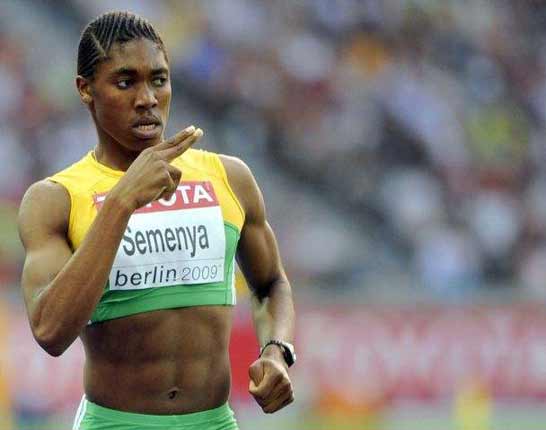Gender doubt over 800m star
Women's world No 1 Semenya faces tests to dispel rumours she has male genes

While Caster Semenya, the new teenage sensation of the women's 800m, was getting ready for the challenge of the World Championship final it emerged yesterday that the South African runner had been undergoing tests not of her speed but of her gender.
Speculation about the sexuality of the 18-year-old had been mounting on the track and field scene since Semenya shot to the top of the world rankings for the two-lap event with a stunning time of 1min 56.72sec in the African Junior Championships in Mauritius three weeks ago.
Just five hours before she was due to line up as favourite for the 800m final in the Olympiastadion in Berlin came confirmation that she had been subjected to tests to determine her gender.
Nick Davies, communications director of the International Association of Athletics Federations, confirmed Athletics South Africa had been contacted and asked to provide "gender verification documentation". "The gender verification test is extremely complex and difficult and the report has not yet been concluded," Davies said. "The situation today is that we don't have any conclusive evidence that she should not be allowed to run."
Semenya's coach, Michael Seme, maintained that his charge was prepared to "take off her pants" to prove her sexuality. He said Semenya, who hails from the Limpopo province, had been stopped from entering female toilets at a petrol station in Cape Town recently because attendants were convinced she was a man. "Caster just laughed and asked if they would like her to take off her pants to show them she was a woman," he said.
Seme laughed in recalling the incident, adding he was "100 per cent certain" that Semenya was female. He said he was keen to clear the air after all of the trackside speculation. "We understand people will ask questions because she looks like a man," he said. "It's a natural reaction and it's only human to be curious. People probably have the right to ask such questions... But I can give you the telephone numbers of her room-mates in Berlin. They have already seen her naked in the showers and she has nothing to hide."
Davies stressed: "It's a medical issue. It's not an issue of cheating. We have to be very sensitive to this. We're dealing with a human being, someone who was born as a woman and who has grown up as a woman and we now have this issue where that is being questioned."
Semenya, who broke Zola Budd's South African junior 800m record in March, is not the first track and field athlete to become embroiled in gender speculation. Stella Walsh, the Polish sprinter who won the Olympic women's 100m title in Los Angeles in 1932 and who took silver in the Olympiastadion here four years later, was found to have partially developed male genitalia. Subsequent tests revealed that she possessed both male and female chromosomes, a condition known as mosaicism.
The German athlete who finished fourth in the women's high jump at the 1936 Berlin Olympics was known as Dora Ratjen but was later discovered to be a man, Hermann Ratjen.
Sex tests were introduced in athletics in 1966 following suspicion that Soviet athletes competing as females were male. Mandatory sex tests were introduced at Olympic Games but dropped after 1992. Only one female competitor was excused the examination at the 1972 Games in Munich: Princess Anne.
In the genes: Dora or Hermann?
How is an athlete's gender verified? Sex tests have changed greatly from the physical examination of the 1960s. They now involve gynaecologists, endocrinologists, psychologists, gender experts and the analysis of blood samples to detect the presence of the Y chromosome gene SRY that indicates male orientation.
Are there any previous cases? After breaking the women's high-jump world record at the European Championships in Vienna in 1938, the athlete known as Dora Ratjen was spotted with a "five o'clock shadow" on the train back to Germany – an examination revealed her to be a man. Hermann Ratjen claimed Nazi officials forced him to compete.
Stella Walsh won the women's 100m at the 1932 Olympics in Los Angeles and took silver in 1936. She was shot dead during a robbery at a shop in in 1980 and was found to have male genitalia.
Join our commenting forum
Join thought-provoking conversations, follow other Independent readers and see their replies
Comments
Bookmark popover
Removed from bookmarks